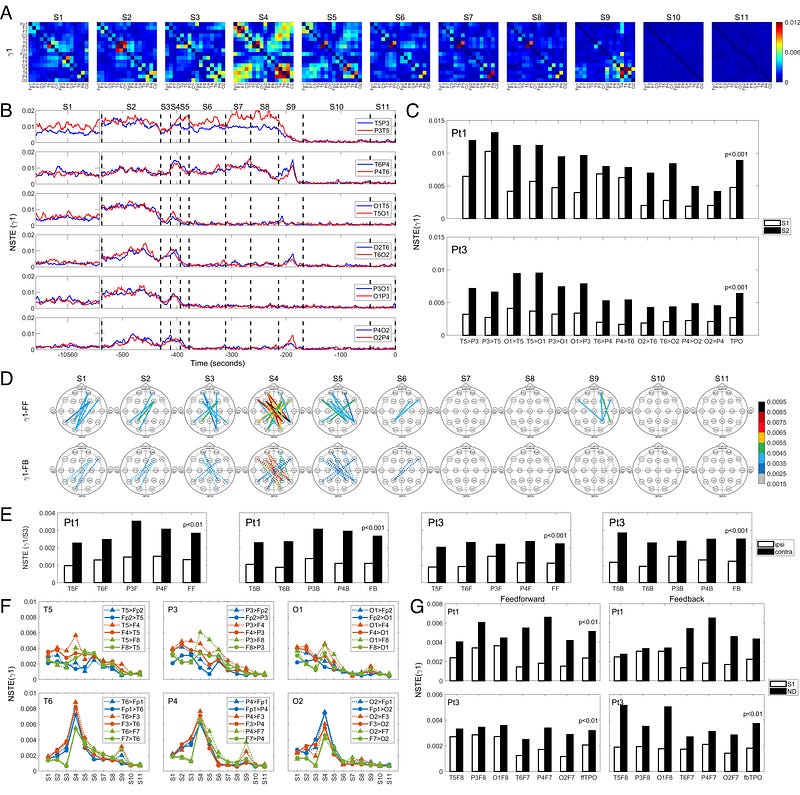# Exploring the Science Behind Life's Final Moments
Written on
Chapter 1: A Life-Changing Incident
In the vibrant city of Buenos Aires, an ordinary day filled with childhood play took a drastic turn. While I balanced my cherished soccer ball in one hand and held my mother’s hand with the other, my younger sister was nestled in her trolley. Everything felt perfectly normal as we made our way home from kindergarten—until that fateful moment when the ball slipped from my grip at the crosswalk.
In a split second, my mother’s hand was empty, my sister's trolley was unattended, and I found myself racing after my beloved ball, oblivious to the changing traffic signal.
Suddenly, reality transformed. I became an observer, detached from my own body, watching as paramedics rushed my lifeless form into the emergency room after a cab struck me.
That day blurred the boundaries between life and death, leaving me with an otherworldly experience that was both surreal and indescribable. Nearly three decades later, after enduring a three-day coma and a challenging three-month hospital stay, I am beginning to uncover a scientific explanation for that enigmatic moment. The incident on the streets of Buenos Aires might reveal significant insights into the mysteries of the human brain and the dying process.

Chapter 2: The Universal Experience of Near-Death
It’s not just my story; many individuals who have faced near-death situations report similar out-of-body experiences. Numerous accounts describe individuals witnessing their lives flash before their eyes, reliving memories, or observing themselves from a distance.
Could it be that the dying process stimulates brain activity? While this notion may seem counterintuitive, recent research suggests otherwise.
Traditionally, the brain was thought to be inactive during cardiac arrest. However, a recent study published in the Proceedings of the National Academy of Sciences challenges this long-standing belief. The study analyzed the electroencephalogram (EEG) readings of four patients who were terminally ill and had life support withdrawn, revealing a remarkable spike in brain activity following cardiac arrest.
This finding could elucidate why individuals recall vivid memories even after their hearts have stopped, potentially indicating a state of clear consciousness.
Although death is conventionally defined as the irreversible stopping of the heart, various studies indicate that brain activity can persist for seconds to hours post-mortem. For instance, research conducted by Jimo Borjigin and his team at the University of Michigan in 2013 found that rats displayed signs of consciousness for up to 30 seconds after their hearts stopped beating.
This raises a thought-provoking question: Is our conventional understanding of life and death in need of revision? Perhaps it’s time to reevaluate our beliefs.
Chapter 3: Astonishing Stories of Resuscitation
In 1999, Swedish radiologist Anna Bågenholm fell into icy waters while skiing and remained submerged for 80 minutes. Pronounced clinically dead with no vital signs for over two hours, her core temperature dropped to a life-threatening 13.7°C. Miraculously, her heart was restarted four and a half hours after her fall, and she went on to make a complete recovery.
Similarly, in 2014, 78-year-old Walter “Snowball” Williams was declared dead by a coroner, placed in a body bag, and taken to a funeral home. While the staff prepared him for embalming, he astonishingly began to kick inside the bag.
These extraordinary cases underscore the ongoing mystery surrounding brain activity at the point of death.
The recent study focused on just four coma patients on life support, utilizing EEG technology to monitor brain activity. When life support was discontinued, two of the patients exhibited a sudden surge in brain activity. It’s worth noting that not all individuals who experience near-death situations report memories, which explains why only two out of the four subjects showed activity.
Remarkably, both patients displayed increased functional connectivity in the posterior cortical “hot zone,” a crucial area for conscious processing. This gamma wave activity, triggered by global hypoxia, intensified as their cardiac conditions deteriorated.
Gamma waves may signify that various brain regions are collaborating to create conscious awareness. Understanding how this occurs remains a major enigma in neuroscience, but observing gamma waves in dying individuals suggests a biological mechanism could be at play, allowing for the recollection of significant life events during the dying process.

Chapter 4: The Brain's Final Fight
Similar gamma waves were identified in earlier studies involving individuals who experienced heart attacks while their brains were being monitored for seizures. Other research has found these patterns in healthy individuals recalling memories or dreaming, prompting some neuroscientists to associate these waves with consciousness.
Researchers observed heightened electrical activity in the temporo-parieto-occipital junction, a brain region vital for consciousness. This area activates during dreams, seizures, and out-of-body experiences. As oxygen levels diminish, the brain shifts into survival mode, leading to this surge in activity. Studies on brain death in animals show that the brain releases a flood of signaling molecules and generates unique brainwave patterns in a desperate attempt to save itself while simultaneously suppressing signs of external consciousness.
“It shuts the door to the outside world and takes care of internal business because the house is on fire,” Borjigin explains.
While the true implications and mechanisms of these findings remain to be fully explored beyond the initial four cases, it is clear that the brain fights to the very end. Our understanding of death, it seems, is far from complete—even when we observe our own bodies from above.
Thank you for taking the time to read this piece. Subscribe to stay informed and join our community of over 400 Antarctic Sapiens for weekly thought-provoking content!